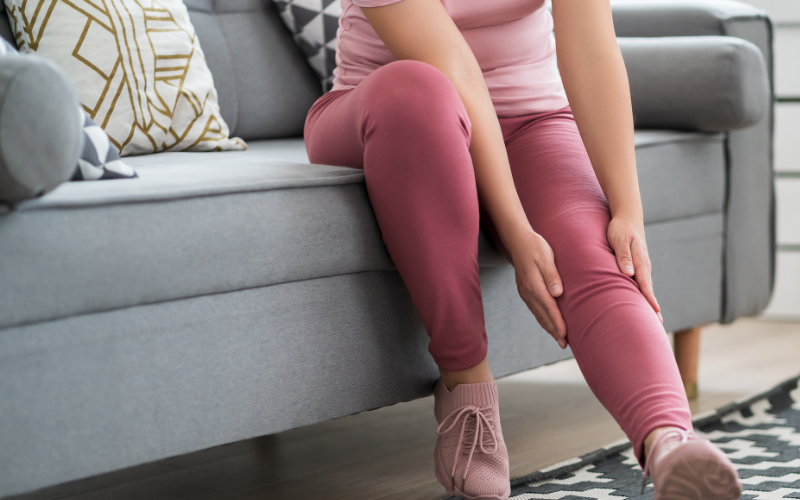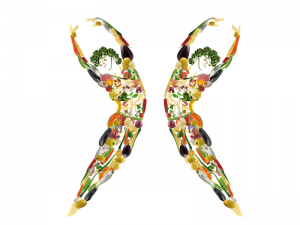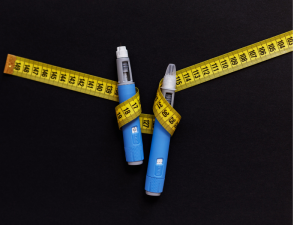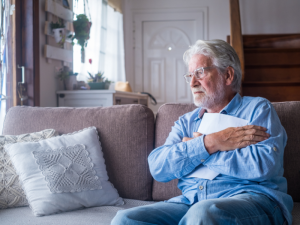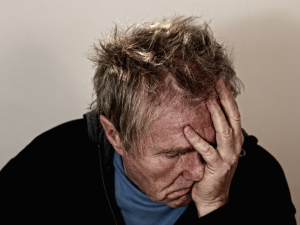Menopause is a natural part of ageing, but it’s often associated only with symptoms like hot flashes and mood swings. What many don’t realise is that menopause can also significantly affect the muscles, joints, and bones. This section explores the musculoskeletal impacts of menopause and the emerging recognition of Musculoskeletal Syndrome of Menopause.
What is Musculoskeletal Syndrome of Menopause?
The term Musculoskeletal Syndrome of Menopause (MSM) is relatively new, but it reflects the growing recognition of musculoskeletal issues related to menopause as a distinct clinical phenomenon. Research has increasingly highlighted the musculoskeletal problems associated with menopause, significantly as oestrogen levels decline. Before this, symptoms like joint pain and stiffness were often attributed to ageing or other conditions. Now, MSM is understood to include joint pain, muscle aches, and an increased risk of osteoporosis, leading to more targeted treatments such as hormone replacement therapy (HRT) and physical therapy.
How Menopause Affects Muscles, Joints, and Bones
As menopause approaches, a variety of hormonal changes can take a toll on the mind and body, particularly the musculoskeletal system. Oestrogen plays a key role in maintaining strong bones, healthy muscles, and flexible joints. When oestrogen levels decline, the following symptoms may be experienced:
- Joint pain and stiffness – Especially in the hands, knees, and shoulders.
- Loss of muscle mass – aka sarcopenia, which can make everyday tasks more challenging.
- Weaker bones – Increasing the risk of osteoporosis and fractures.
- More injuries and longer recovery times – Tendons and ligaments become more prone to strains and tears.
- Higher arthritis risk – Cartilage may break down faster, leading to degenerative changes and osteoarthritis.
It’s worth noting that these symptoms often develop gradually and in isolation, which means they can be mistaken for signs of normal ageing. However, recognising them as menopause-related allows for proactive management.
Perimenopause: The Transition Before Menopause
Perimenopause, the transition phase before menopause, can begin as early as the 30s. Hormonal fluctuations during this period—leading up to menopause in the late 40s or early 50s—typically result in symptoms such as irregular periods, mood changes, fatigue, brain fog and aches and pain. Understanding that perimenopause can affect musculoskeletal health is essential to maintaining mobility, strength, and overall well-being during this time and beyond; women may live a third of more of their lives in post menopause.
Managing Menopause-Related Aches, Pains, and Weakness
While ageing can bring physical challenges, there are steps you can take to stay strong, mobile, and pain-free. Below are some practical strategies for managing musculoskeletal issues.
Easing Joint Pain and Stiffness
As oestrogen levels drop, inflammation may increase, leading to joint pain and stiffness, especially in the mornings.
What You Can Do:
- Keep moving – Gentle exercises like walking, swimming, and body awareness practices such as Pilates, Tai chi or yoga can help.
- Strength training – Lifting weights or using resistance bands can help support the joints.
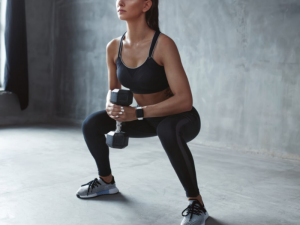
Preventing Muscle Loss (Sarcopenia)
Muscle mass naturally declines with age, but menopause accelerates this process, making everyday tasks harder.
What You Can Do:
- Strength training – Pilates, bodyweight exercises, and weightlifting can help maintain muscle.
- Eat Protein-rich foods to build lean muscle– Lean meats, fish, eggs, beans, and dairy support muscle growth.
- Get optimal levels Vitamin D and creatine – most folks need supplements to achieve optimal levels to support muscle function.
Protecting Bone Health and Preventing Osteoporosis
During perimenopause, women can lose up to 10% of their bone density, increasing the risk of fractures. A DEXA scan can assess bone density and risk.
What You Can Do:
- Eat calcium-rich foods – Leafy greens, nuts, and dairy help support strong bones.
- Take Vitamin D with K2 – These nutrients help your body absorb calcium.
- Do weight-bearing exercises – Resistance training helps keep bones strong.
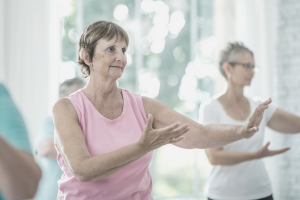 Reducing Arthritis Risk and Cartilage Damage
Reducing Arthritis Risk and Cartilage Damage
Oestrogen helps maintain healthy cartilage, so as levels drop, joints become more vulnerable to wear and tear, increasing the risk of osteoarthritis.
What You Can Do:
- Low-impact exercise – Swimming, cycling, pilates, tai chi help keep joints moving without causing strain.
- Maintain a healthy weight – This reduces pressure on your joints.
- Consider supplements – Vitamin D with K2 and magnesium may support joint health.
Can HRT Help?
Hormone Replacement Therapy (HRT) replaces declining Oestrogen and may help with joint pain, muscle strength, and bone density. HRT Can:
- Slow muscle loss when combined with exercise.
- Help prevent bone loss and fractures.
- Slow cartilage breakdown.
- Some women find HRT reduces joint pain.
Non-Hormonal Support
If HRT isn’t an option, other strategies can help manage symptoms, including:
- Phytoestrogens – Plant-based compounds that mimic oestrogen, found in soy products, flaxseeds, and legumes.
- Herbal remedies – Black cohosh, red clover, sage, and ashwagandha may ease symptoms, although evidence is mixed, so please take advice.
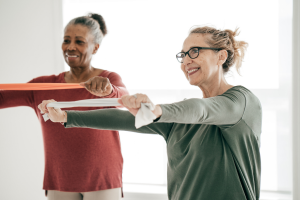
What Interventions Can Help?
In addition to lifestyle changes, specific interventions can offer relief and support during menopause:
- Hands-on treatment – Osteopathy, hands-on physiotherapy, and similar manual therapies can help alleviate joint pain, improve flexibility, and reduce stiffness.
- Personal training – One-on-one Pilates sessions are particularly beneficial, as they can be tailored to individual needs. Pilates can help strengthen the core, support bone health, improve joint mobility, and reduce muscle loss. Personal training is another good option, an informed trainer mindful of the changes that occur in a mid-life body can focus on strengthening muscles, improving posture, and increasing flexibility because causing discomfort.
Final Thoughts
Midlife and beyond brings many changes (some not welcome) but understanding how hormones affect all of our body but especially muscles, joints, and bones can help you take control of your health. With the right approach – whether it’s exercise, diet, lifestyle adjustments, or medical support – you can stay strong, mobile, and pain-free for years to come, Oh and it never too late.

